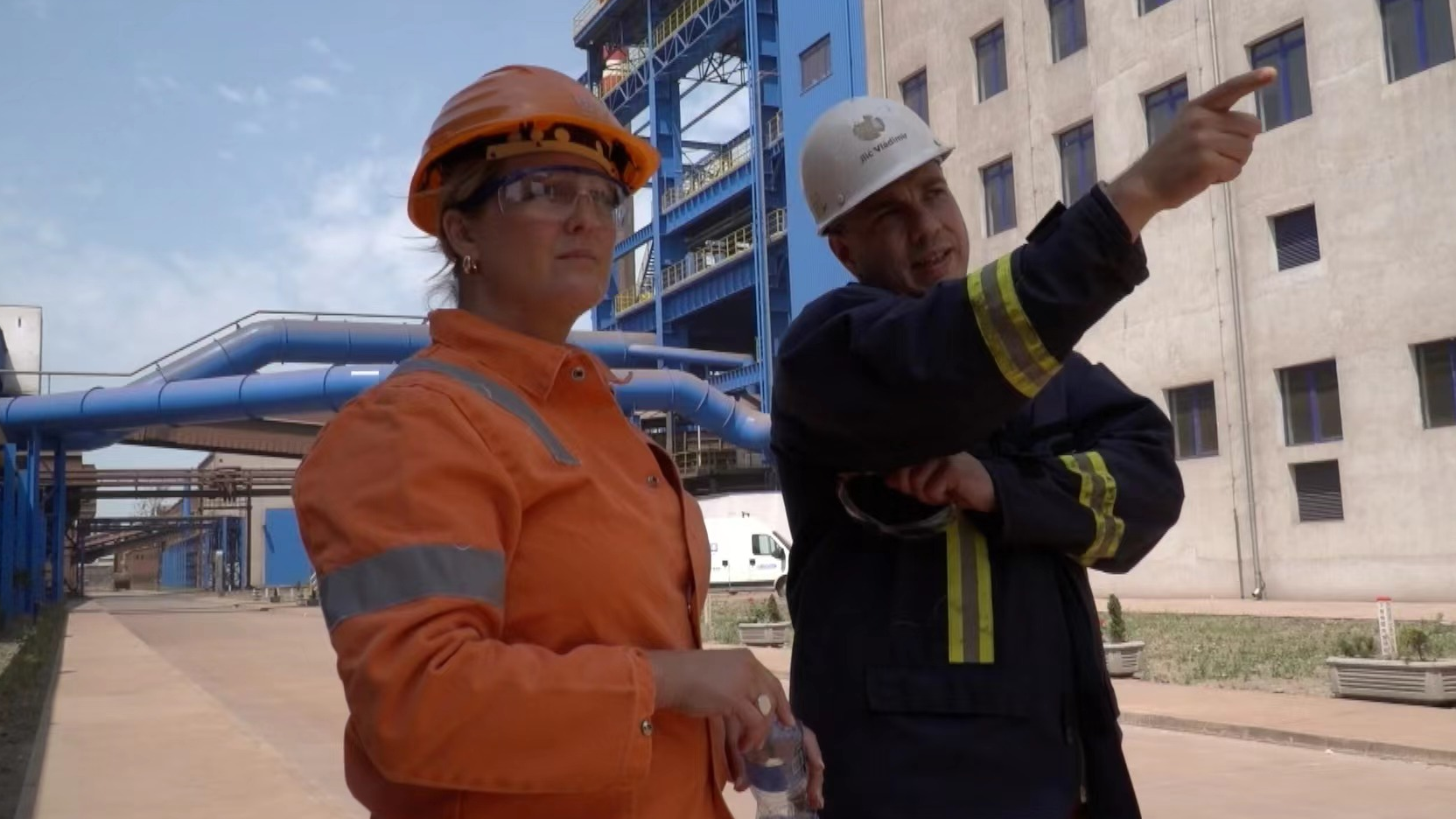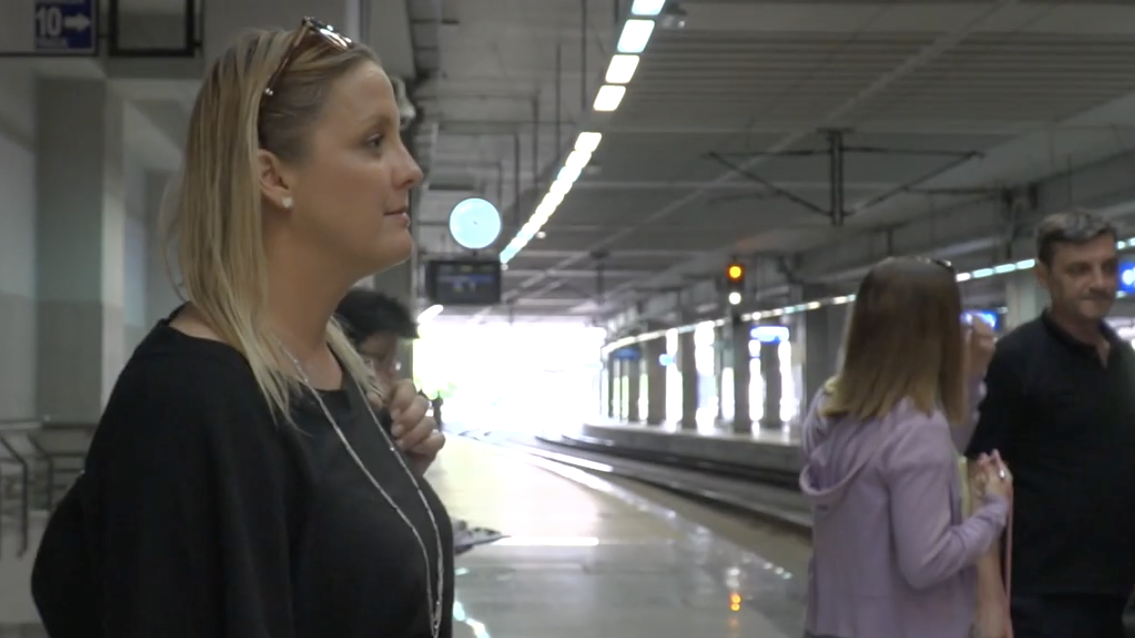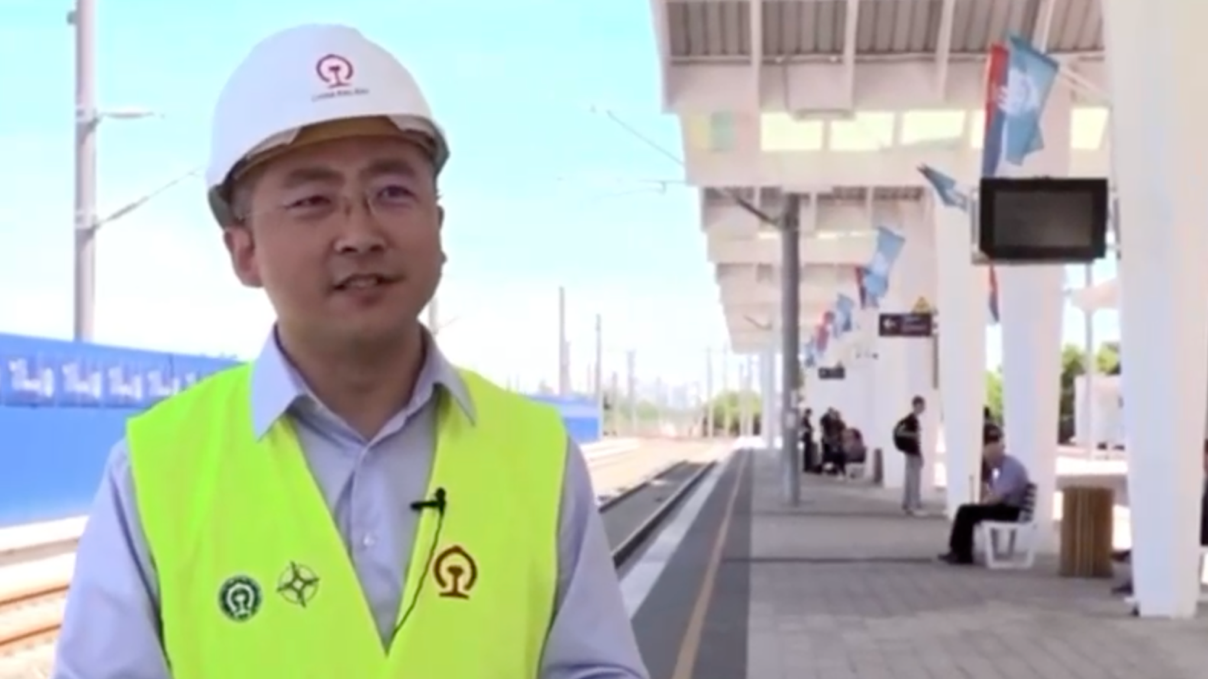11:16

The close friendship between China and Serbia might not appear obvious, but the more time I spent in the Balkan country, the more quickly I came to understand why Chinese President Xi Jinping referred to their "brotherly bond" as "profound."
It truly is a relationship built on mutual benefits.
I drove one hour from the Serbian capital Belgrade to the city of Smederevo the morning after my late-night flight to the country.
I was tired but also excited to see the effects on the area since the local iron and steel mill had been transformed by a $350-million injection from the Chinese state owned Hesteel Group (HBIS).
The decaying brown steel and brick columns of smokestacks were a fine example of the economic challenges Serbia has been facing since the 1990s.
Even as the country's only operating iron and steel mill, it had been years since any real love had been given to this place, but true to Chinese form, within a short amount of time, the company has built a new modern sintering division, substantially improving the efficiency of the old plant, general manager of security and fire Vladimir Ilic told me.
"We will manage to replace the old four product mills with one mill that will have the same production output."
Sustainable resources power this new EU compliant facility, making it much more environmentally friendly, a huge area of contention with local residents who complained about the old mill's heavy emissions.

Vladimir Ilic, general manager of security and fire, shows me around the mill to see the changes. /CGTN
Vladimir Ilic, general manager of security and fire, shows me around the mill to see the changes. /CGTN
Work is still underway to replace all of the old, archaic lines here, but already steel production has rapidly grown more than 100 percent, to around 2 million tons a year, making the plant one of the country's largest gross exporters.
"With the arrival of the Chinese investors, we knew that this plant definitely had a future. So, people's minds and people's confidence changed. The atmosphere has become much better, and this place immediately came to life. It brought stability to us and the local economy. This impacts the livelihood of the entire city," Ilic said.
The new management brought with it better salaries, benefits and working conditions for every employee.
Milan Barbaric, the deputy manager of all the fancy new electronic equipment here, shared with me just how his and his family's life was improving.
"I have better working conditions than before, and since I was promoted, I can plan my future – buying a flat for my family. My wife and I have three kids, and it is of great importance for us to be able to get a better mortgage rate."
I was quick to learn in the bustling city center how nearly every one of Smederevo's roughly 60,000 residents is touched by the mill, be it by direct employment, subcontracting work and then those wages being spent directly in the community.
During a 2016 state visit to Serbia, Chinese President Xi Jinping visited the plant and spoke of the two countries' "friendship of steel," saying that by "fully leveraging our strengths and increasing the competitiveness of the company, the Smederevo Steel Mill is bound to be revitalized and play a positive role in increasing local employment, improving people's living standard and promoting the economic development of Serbia."

Waiting to board the train from Belgrade to Novi Sad. /CGTN
Waiting to board the train from Belgrade to Novi Sad. /CGTN
Enhanced infrastructure to help facilitate these exports was next on the list of projects between the two countries, which led me to Novi Sad, Serbia's second largest city.
To get there I took the comfortable "fast train" from Belgrade in only 34 minutes.
This newly opened travel option trumps the 1.5-hour car journey between the two major cities, fellow passenger Marko said.
"This is my third or fourth time on this line, and it so much easier now. I don't have to focus on driving, I can check my cellphone or my laptop."
It was also the first time on the fast train for Belgrade resident Duda Rogic.
"It is fabulous. I'm going to meet some friends for lunch. This line is very important for working people, but also for us who travel for pleasure."
This line is the second portion of a $370.4-million fast train rail network between Serbia's capital Belgrade and Budapest, the capital of neighboring Hungary.
Once complete, these 342 kilometers of track will connect the Balkans with the European Union in less than three hours, benefitting cargo and passenger traffic.

Qi Fengran, deputy general manager for Serbia China Railway International, at a construction site. /CGTN
Qi Fengran, deputy general manager for Serbia China Railway International, at a construction site. /CGTN
At the newly renovated Novi Sad station, I met Qi Fengran, who is helping to manage the Serbian track work for China Railway International, which is running this project along with China Communication Construction Corporation.
Qi said that eventually 14 tracks will run through here, 12 to service the local communities and two that will be dedicated for the fast trains to the border with Hungary.
"The second phase of Novi Sad station will be done by early next year and for the whole project (on the Serbian side), we think it will take at least around three and a half years."
Qi told me another team is designing and preparing the work on the Hungarian tracks from Budapest.
"The project is a connection between China-proposed Belt and Road Initiative and the European development strategy. So, this also can develop and strengthen the friendship and cooperation between China and Europe and boost the local economy," Qi said.
For me, this project really highlights the mutual benefits of China-Serbia cooperation.
Not only does it help facilitate exports, including China's, across the region, but also upgrades Serbia's infrastructure in line with EU benchmarks.
My last focus on this visit was to explore the bilateral cooperation in medical research and development.
I was aware of China's support in Serbia's fight against COVID 19 – from the delivery of over a million vaccine doses early on to protective medical equipment to doctors, China has been there for Serbia.

Mirjana Novkovic explaining the importance of genome sequencing in battling COVID-19. /CGTN
Mirjana Novkovic explaining the importance of genome sequencing in battling COVID-19. /CGTN
Even through infrastructure, China has helped build a Sinopharm vaccine factory in Belgrade, while Chinese biotech firm, Beijing Institute of Genomics (BGI), helped construct two "fire eye" testing laboratories, to help expedite COVID-19 infection detections.
BGI then donated millions in equipment for the development of the country's first genome sequencing center, where SARS-CoV-2 is now being "dissected" to understand any "genomic mutations," said Mirjana Novkovic, the head of the COVID-19 sequencing line.
"We are following new lineage and variants of COVID-19 which appear here in Serbia. If something emerges, we will announce it, and then we will see how to approach this new variant and whether it's harmful or not."
Sequencing allows scientists to determine the entire genetic makeup of a specific organism or cell type, which can then help them track the spread of a virus, diagnose or treat disease, and develop more effective drugs or vaccines.
It can also be used in agriculture to produce more predictive seeds, for instance.
The work being done by BGI and Belgrade's Institute of Molecular Genetics and Genetic Engineering for this center is a "precious collaboration," according to the institute's director Dr. Jelena Begovic.
"We learned a lot from them, really, because we didn't have experience with such a big challenge. This is one step forward for us in science, in bio-med and bio-tech. The colleagues from BGI really helped us a lot. I think this is only the beginning of our actual collaboration."
After four days in the country, it was time to go home. While I could have easily stayed longer, I was satisfied. Not only had I learnt more about the rich and sometimes painful past of the Balkans, but I was also excited for the potential in their future – thanks to that time-honored "friendship of steel" with their reliable partner, China.

